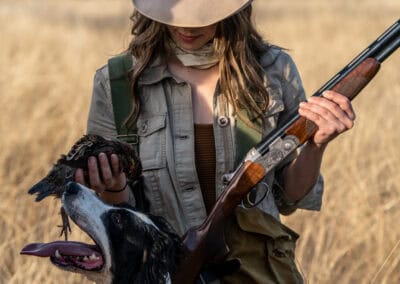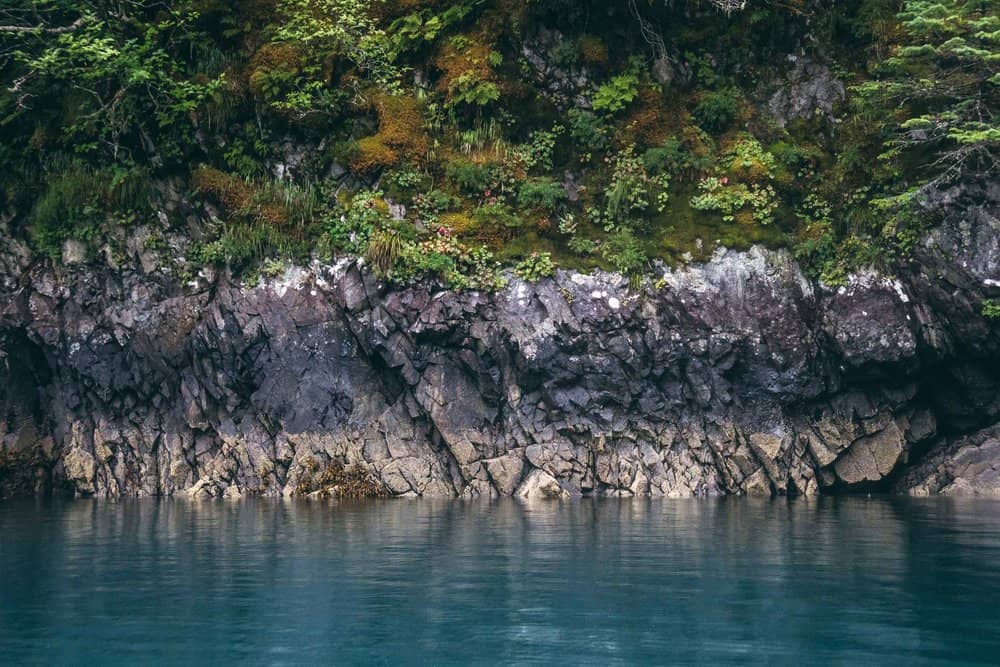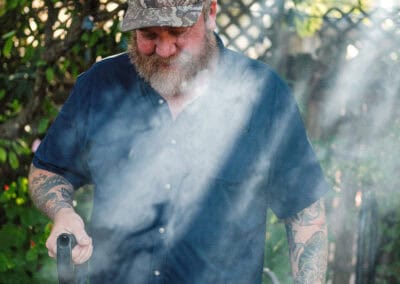Your cart is empty


It wasn’t long ago that California’s great rivers brimmed with the hooked jaws of salmon. Today, most if not all of that wildness, has disappeared under the chopping block of western progress at any cost. To be able to drift back in time to a place where salmon continue to flood August rivers is perhaps my greatest inspiration. These wild rivers and the salmon that sustain them are not impervious or immune to human progress, and more than anything I hope my grandkids get to stand in the wild salmon waters one day.
I grew up hearing the stories of our backyard creek in northern California and the thousands of wild coho salmon that arrived each October. But by the time I was born, most had disappeared from the coastal creeks of northern California. I dreamed of seeing those gin-clear streams with so many salmon that the water swirled and churned with life. If it rained, my dad would load us into his old Volvo and we’d head down to the creek to watch the ancient migration unfold.
Most days we saw nothing save for a churning, muddy creek. No salmon broke the water’s surface, or lept up the braided falls. But that didn’t stop us from coming back day after day until we saw what we were after, a wild coho salmon. Sometimes it’s easy to forget that we still have wild places that need our voice, reverence and eyes, so that we might find inspiration to protect what we love. Decades of development, logging, mining, overfishing, and an itch for blind progress at any cost left most of America’s wild salmon rivers beaten down, degraded, and a remnant of a once wild and vibrant ecosystem. And it’s not just the fall runs that have disappeared, it’s the summer, spring and winter runs too. They’ve mostly faded away with the health of their watersheds and marine ecosystems that have sustained them for millennia.

But even in the face of this decline, wild salmon strongholds still exist around the Pacific, for now at least. Out in a remote Alaskan bay I found what I had been dreaming of: waters teeming with salmon; a lone bear scouring the bank’s edge; puffins, murrelets and eagles racing by with fish on their mind. The world slowed to a crawl as my wife, Rachel Pohl, gently rowed through the rainforest with smiling eyes. It rained and rained and rained, and we sat in the middle of the sea drenched from an Alaskan deluge.
She caught her first salmon on the end of a borrowed fishing pole, and we cooked it for dinner, full of gratitude for these pristine corners and the local community hell-bent on stewarding these places that have no voice. Our smiles tell the story. That was one of my proudest moments: to see her catch, gently handle, and create a moment that definitely cultivated a deep reverence for this fish and the landscapes and waters that sustain them. It was a dream come true, especially because I’ve spent most of my adult life studying freshwater ecology, salmon streams, and working as a field scientist. To share that with my partner was a moment I’ll never forget, and is something I hope to share with others as the years march on.
It’s a reminder that these ecosystems are not just wild salmon strongholds, but also serve as a fountain for memories and transformative experiences: a gift from nature. What happens to our own humanity when we lose what’s wild? What happens when we’ve lost these wild salmon rivers for good? How can we possibly look back on and feel proud for leaving behind a legacy marred by the reality that we could have done more, saved those last salmon strongholds while we had time, while we had the chance? I’ve read that wilderness without wildlife is just scenery. Truer words may not have been said.

It boggles the mind to think these wild salmon are born in distant watersheds — often miles from the sea — where they grow and develop from eggs amongst ancient cottonwoods, before migrating downstream past hungry mouths to mature in the great blue. They will more than triple in size then point their noses landward to migrate back to the very stream they were born; it’s a journey unlike any other.
Millions return home each year to simply reproduce and then die. This event is one of nature’s largest single doses of nutrients returned back to the system from which they were born. Bears, gulls, stone and caddisflies, ravens, wolves and eagles will drag these fish into the forest where salmon will feed them and the alder leaves that shade the stream will fall and feed aquatic insects that will in turn feed the next generation of salmon. These trees will grow old and sag into the stream below to create shelter for young salmon and pools for migrating salmon to rest on their way upstream. This cycle is perfect, self-sustaining, dynamic and ancient. To witness this is a chance to look into the heart of one of nature’s greatest spectacles.

The most important lesson we can learn from a wild Alaskan river in 2018 is that there’s still so much to save, so many wild salmon hanging in the balance. They need an inch from us so they can take a mile. They’re survivors, and they just need a chance. We have an opportunity to learn from our mistakes, and craft a future for wild salmon that may well ensure they persist into the future. If we hope to save them we also need to save the ecosystems and wilderness, marine and terrestrial, that supply their livelihood. Without healthy watersheds and oceans there’s no hope.
But if we can leverage our voices, dollars and votes to support the groundswell of energy committed to the preservation of wild salmon, we have a chance to rewrite their future and secure their place on Earth. And it’s not just for these majestic fish, it’s for the experiences and inspiration provided by their presence that holds the potential to cultivate a new generation of reverent, curious and fierce defenders of wilderness.
Right now, a fight is playing out in Alaska as citizens attempt to do just that, give salmon an inch, in their world-famous rivers. This November, Alaska will be voting on measures that may help save one of the world’s last great salmon strongholds, Bristol Bay, which supports millions of salmon and the countless families, plants and animals who rely on this cornerstone fish species. They are now under threat from a proposed pebble mine, that if approved, will jeopardize one of the last truly wild ecosystems we have left in North America. A mine has a shelf life, a wild salmon ecosystem does not; if we give it a chance, it will continue to do what is has for millenia: thrive. Let’s give it that chance.
To learn more about wild salmon and an upcoming Alaska ballot initiative that holds the power to write the future of Bristol Bay visit WildSalmonCenter.org.
This story is from Modern Huntsman Volume Two. To read this story in print and to read more stories like it, you can purchase Volume Two in the link below.
Related Stories



Latest Stories


